Written with the expert advice from driver coach Martti Pietilä.
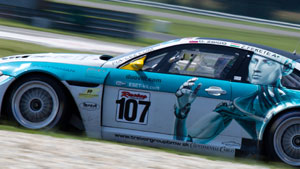 Ergonomics is one of the most overlooked subjects in sim racing, but it can help your performance a lot. While simracing is physically less demanding than real life racing, you must still control the car with your body. Make sure you’re comfortable, and in top shape.
Ergonomics is one of the most overlooked subjects in sim racing, but it can help your performance a lot. While simracing is physically less demanding than real life racing, you must still control the car with your body. Make sure you’re comfortable, and in top shape.
Here, we’ll cover the positioning of your seat, monitors, wheel and pedals.
Seat
Clamping a wheel to your desk and sitting behind it on an office chair is disastrous, and if you’ve ever tried this you can probably concur. Your chair, on its wheels, is going to move all over the place, putting your joints in unwanted positions and distracting you from the racing itself. You want your seat to be fixed. If you can’t do this with your office chair, the cheapest fix is a folding chair for campsites, and the most expensive option is a dedicated race seat in a full blown rig.
We’d recommend the GT-style seating position, which is more upright than a Formula 1 style positioning. The latter may seem comfortable, but it’s not. Your back and neck will be very curved, creating undesired strain. In F1 racing, the manufacturers want to have the center of gravity as low as possible, but that’s not relevant in sim racing.
Wheel (arms)
For office work you want to have your keyboard and mouse just above your waist level, so your forearms are parallel to the floor, but with a wheel you don’t want that. Your shoulders and the top of your wheel should be at the same height. The angle of your wheel should ideally be such that it points directly at your shoulders.
Your wheel should be as close as possible. A way to measure is stretching your arms over the wheel. The top of the steering wheel should be at around the middle of your forearms, or at maximum your wrists. At first, this will seem just a bit too close, but try practice the new posture in the sim.
For your elbows: you need to comfortably bend them. Your elbows should be sunk a little bit below your wrists when holding the steering wheel in the 3′ and 9′ o-clock position. Try to aim for an angle of 90 to 120 degrees in your elbows. The distance should still allow you to turn the wheel 180 degrees to the left from the center, and 180 degrees to the right from the center, without taking any hand of the wheel.
Just like a real racecar, the top of your wheel should be as high as your shoulders.
Wheel (hands)
There should be no debate. Your hands should be at 3′ and 9′ o’clock. It’s there that your hands will have the best ‘feel’ for what the car is doing. Take your middle finger as a reference point.
It’s good to realize that when you’re turning, the hand on top of your wheel, is the hand with most sensitivity, vice versa. Keep both hands on the wheel. When turning, your top hand is doing the main job and has the strength and finesse that will make you go faster. The bottom hand has more of a supporting role. This means, if you’re turning left, push with your right hand; if you are turning right, push with the left hand.
Pedals
The angle of your knees itself isn’t so important, unless they’re too bent that they give you knee strain, and as long as they’re not hitting your wheel. Try to keep your legs as straight and comfortable as possible, but never fully straight. Your pedals shouldn’t be so far that you’re fully stretching your leg to hit full throttle. This is the position your legs will be in for the majority of the lap. Yet, when your feet aren’t pushing the pedals, they should be equally comfortable.
Use the ball of your feet to apply pressure on the pedals. Especially if you’re using heavy load cells, you should be using the big muscles in your legs, not the muscles in your feet. This will prevent fatigue and offers greater sensitivity.
On the matter of pedal ‘heaviness’: heavier pedals are preferred to feather-light ones. If your pedals have a load cell, adjust them to be heavier, especially the brake pedal. Don’t put the pedals at their heaviest setting immediately, it might be too big a change, but instead gradually increase the heaviness a few percent each week. Heavier brakes will help you build what they call ‘muscle memory’, and it’ll be easier to brake consistently and accurately.
Always rest your feet on the pedals. Calibrate dead zones on your pedals appropriately, so that if you are just resting your feet on the pedals, the sim does not record any pedal inputs. If you’re using the clutch pedal, rest your left foot there. Otherwise, rest your left foot on the brake. Your heels would typically be firmly “planted” onto the ground or metal baseplate of your pedals set. Then you’d just pivot your feet around the heel to change between pedals to apply depress the pedals. Some people prefer to “slide” their heels forward and backwards and that isn’t a bad thing, it’s just a matter of comfort and positioning of the pedals.
Like your chair (and wheel for that matter), the base of your pedals should not be moving in the slightest during racing. Make sure they’re fixed solid in position (again, a dedicated simracing rig is the best option).

Monitors
The center of the monitor should be at the level of your eyes. Try to put your monitor(s) as close as possible behind the wheel, without it causing eye strain. The distances should be measured and used in (use a measuring tape or something simular), iRacing’s Field of View calculator. Avoid changing the generated FOV, simply because you want to see your mirrors or your wheels. It will hurt your performance. The FOV is important because when properly set it mimics the real life scale in the virtual world, to which you see into. Correctly set, the simulator will position things in your sight where your brain expects them to be. When that’s off, so is your performance.
Don’t be bothered by your wheel blocking the bottom of your screen. iRacing’s HUD isn’t there, and as long as you can see what’s in front of your car, you’re fine.
Posture
For your full body posture, there’s just one thing you need to do: relax. If you’re too tense, it’ll translate to your racing. Don’t ‘deathgrip’ the wheel, as it’ll give you wrist or elbow pain and will decrease the sensitivity in your hands. Relax with your whole posture, but begin with your jaw. It sounds weird, but try it. Don’t clamp your teeth together, loosen up the jaw and your body will follow.
Up to you:
Get behind your rig and try it! Race around for a few laps, and see if improved comfort can improve your performance.

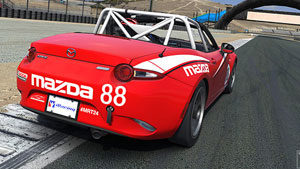

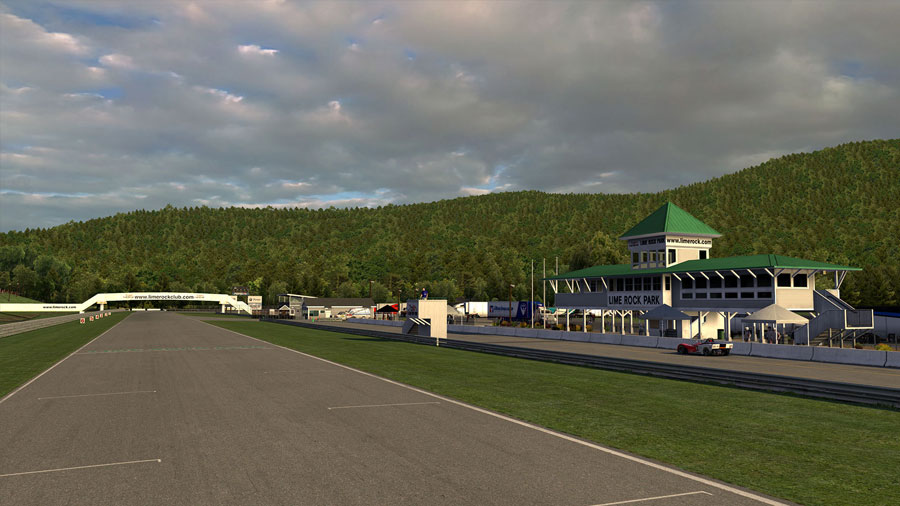
 We chat with
We chat with 
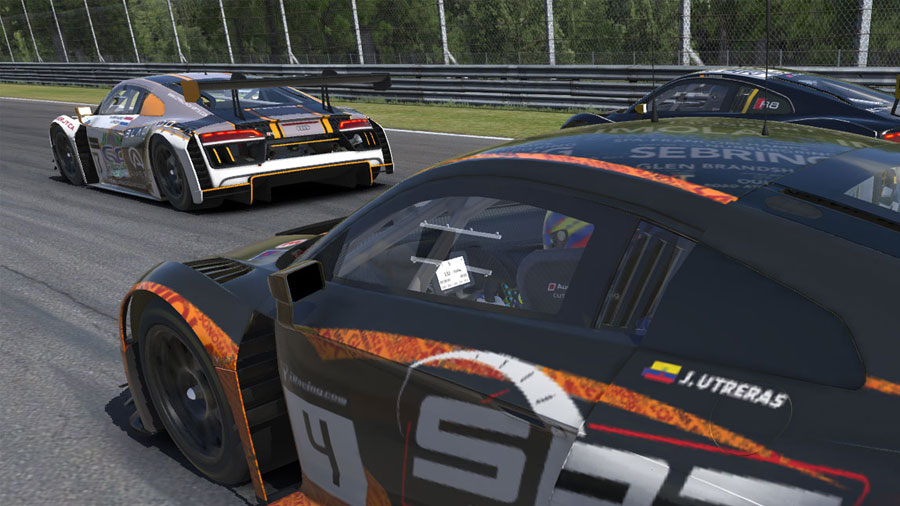
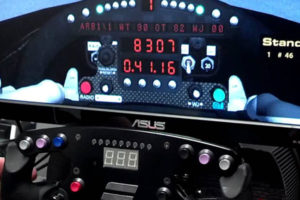 In the following series of blog posts we’re trying to shed some light on the various hardware parts you need to have or – for some parts – should have. To make the chunks of information a little smaller and easier to digest, this is split into the multiple posts. See also ‘
In the following series of blog posts we’re trying to shed some light on the various hardware parts you need to have or – for some parts – should have. To make the chunks of information a little smaller and easier to digest, this is split into the multiple posts. See also ‘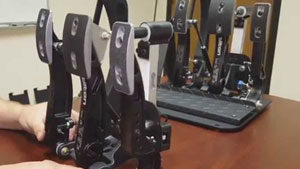 In the following series of blog posts we’re trying to shed some light on the various hardware parts you need to have or – for some parts – should have. To make the chunks of information a little smaller and easier to digest, this is split into the multiple posts. See also ‘
In the following series of blog posts we’re trying to shed some light on the various hardware parts you need to have or – for some parts – should have. To make the chunks of information a little smaller and easier to digest, this is split into the multiple posts. See also ‘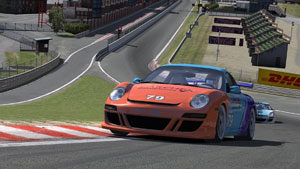 Simracing is harsh, and if you expect things to come easily, you’ll be quickly demotivated. Getting good is a long term project that requires time, money and focus. Here are four key areas to keep in mind as you plot your way towards all those simracing victories, which all four have to do with setting correct expectations.
Simracing is harsh, and if you expect things to come easily, you’ll be quickly demotivated. Getting good is a long term project that requires time, money and focus. Here are four key areas to keep in mind as you plot your way towards all those simracing victories, which all four have to do with setting correct expectations.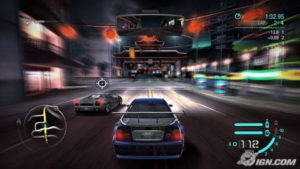 In 1994, Playstation was introduced with the fantastic slogan: ‘Live in your world, play in ours’. And that’s true for any game we play, all built on escapism as we crave for carpe diem. We rescue princesses from castles, play as knights in worlds of fantasy and join armies of modern or futuristic soldiers.
In 1994, Playstation was introduced with the fantastic slogan: ‘Live in your world, play in ours’. And that’s true for any game we play, all built on escapism as we crave for carpe diem. We rescue princesses from castles, play as knights in worlds of fantasy and join armies of modern or futuristic soldiers.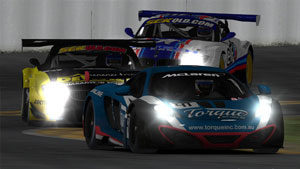 Simracing is brutal. You may think of yourself as a real racing driver, having raced in the likes of Gran Turismo or Forza Motorsport, only to be proven utterly wrong while racing on similar tracks in similar cars in a full-bred racing simulator. Here’s what help you can expect from us.
Simracing is brutal. You may think of yourself as a real racing driver, having raced in the likes of Gran Turismo or Forza Motorsport, only to be proven utterly wrong while racing on similar tracks in similar cars in a full-bred racing simulator. Here’s what help you can expect from us.